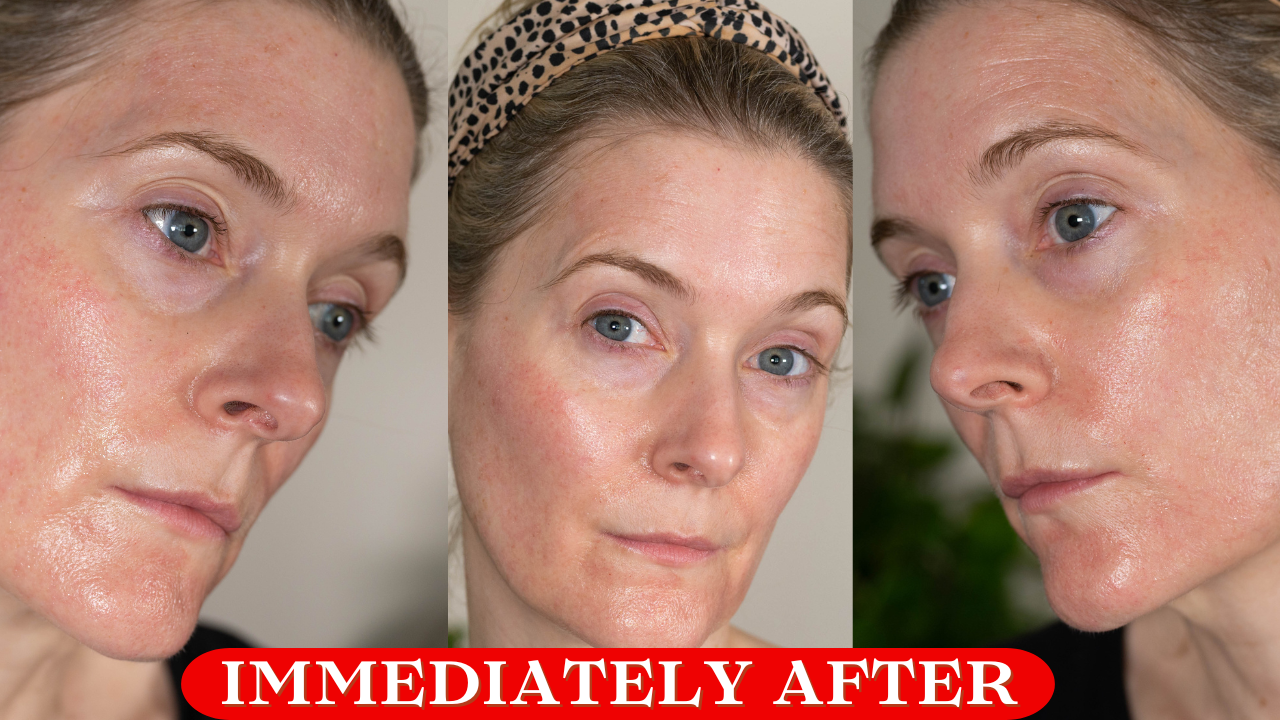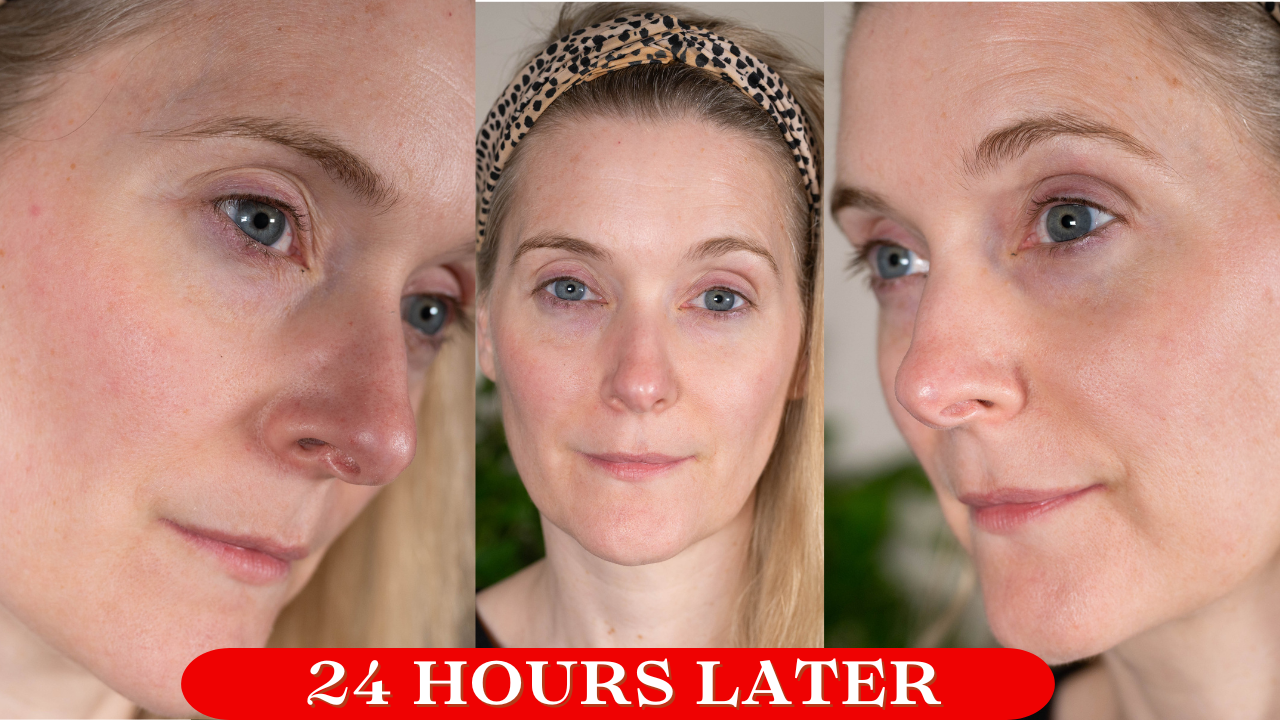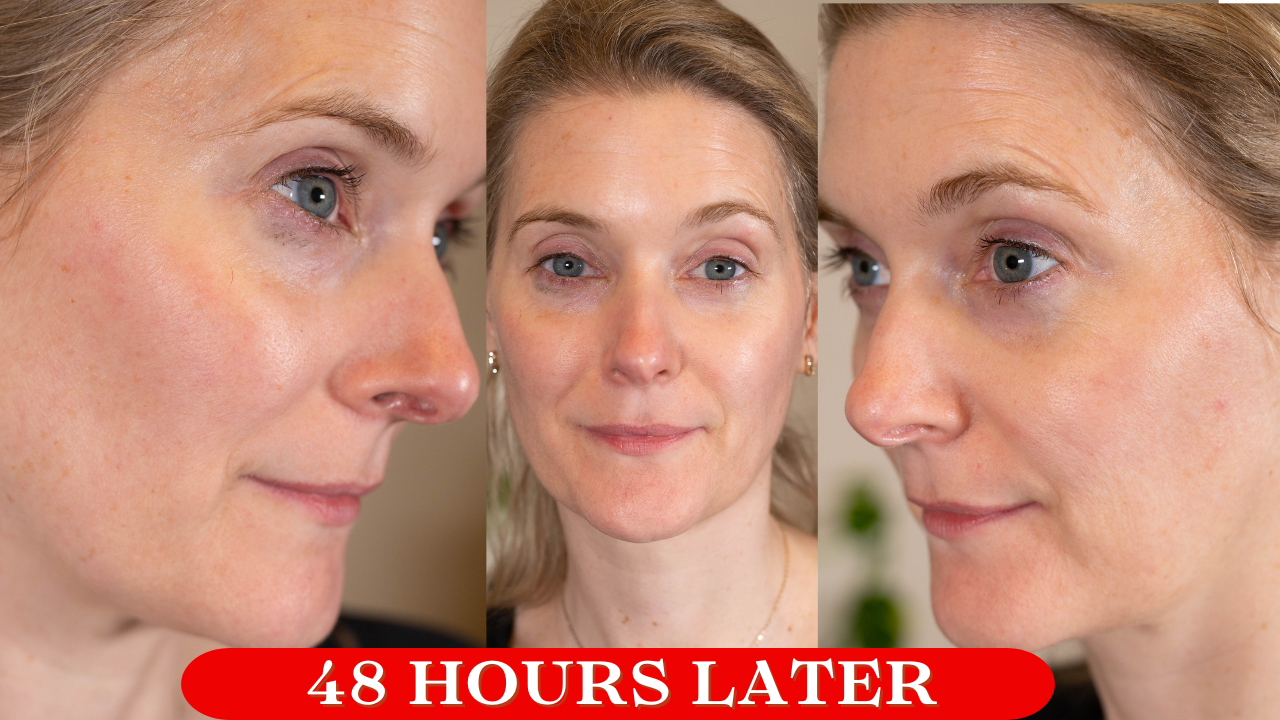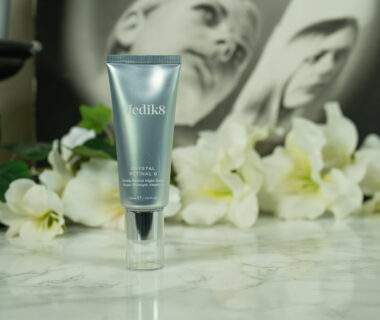ADVERTISEMENT INFO: SOME PRODUCTS MENTIONED IN THIS POST ARE PR (GIFTED) AND LINKS USED ARE AFFILIATE LINKS. I RECEIVED NO MONEY TO WRITE THE BLOGPOST. PLEASE READ DISCLAIMER
A skincare device with gold-plated needles that promises to deliver active ingredients deep into your skin—without pain, trauma, or risk of infection? As someone who’s always been skeptical about at-home microneedling, I had my doubts. But the Qure Micro-Infusion System claims to solve many of my concerns.
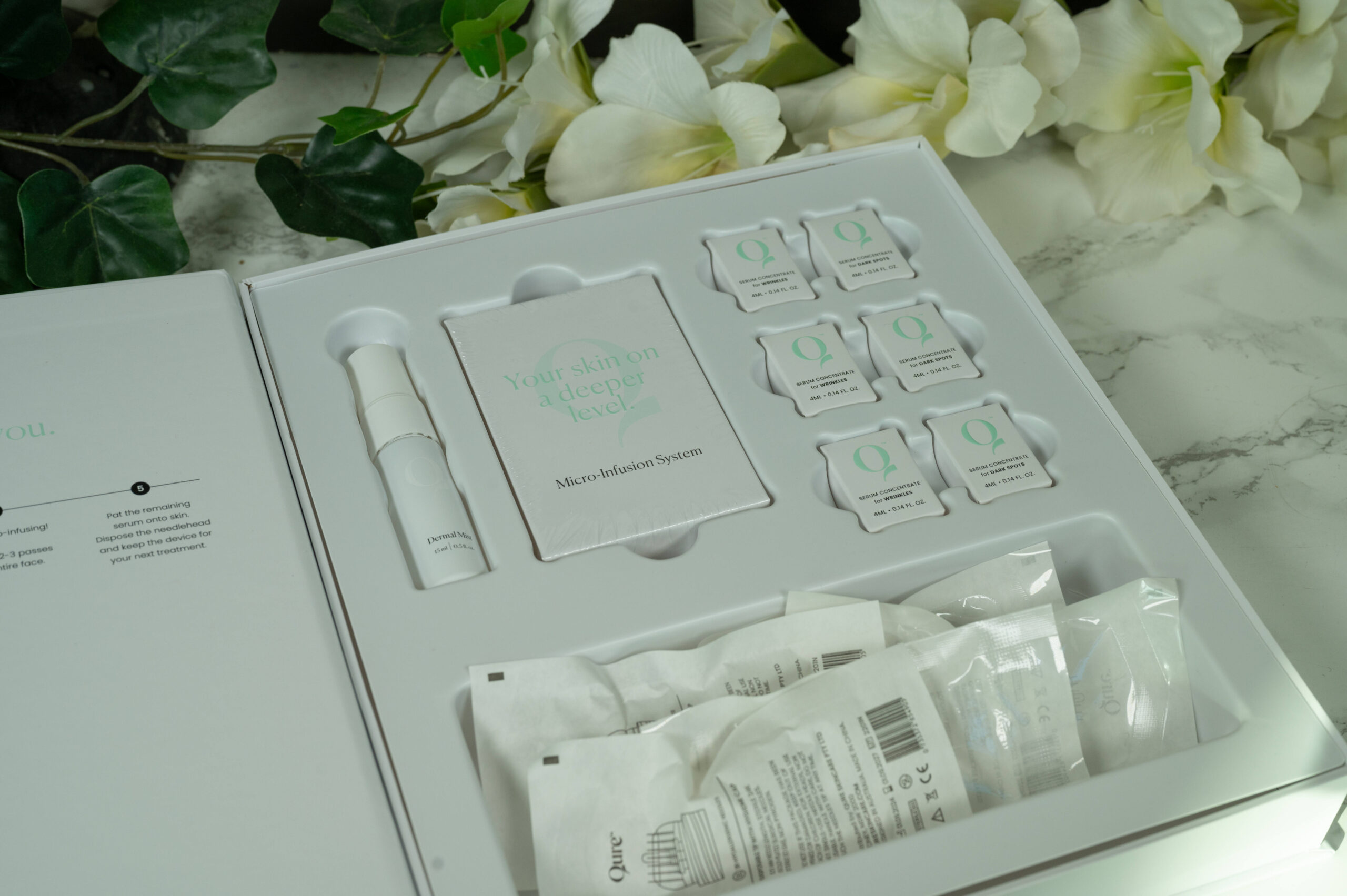
So, does it actually work, or is it just another overhyped gadget?
I tested it for three months—let’s find out!
What the Qure Micro-Infusion System claims
- Helps reduce appearance of fine lines, smooth texture whilst helping to infuse active ingredients into your skin.
- Virtually painless and performed in the comfort and convenience of your home.
- Minimal to no downtime with visible results.
Price and size
There are different bundles available, both in amount of treatments you get as well as in which concerns you want to target. In terms of number of treatments there are three options, 1 month supply for 115 € (that is enough for 2 treatments), 2 month supply for 134 € (that is enough for 4 treatments) and 3 month supply for 143 € (that is enough for 6 treatments) on the website here. As you can see, the more you get the better the value for money.

What is included in the package
Included in these bundles are a facial spray with Hypochlorous Acid to reduce bacteria on your face before starting the treatment, one glass chamber to fill with the serum, one individually packaged head per treatment and one ampoule of serum per treatment. (More info: The benefits of Hypochlorous Acid in skincare explained)
At the moment there are two different serums to chose from:
“Rejuvenating”, designed to brighten hyperpigmentation, help fade dark spots and promote an even skin tone and “Fine Lines and Wrinkles”, designed to help sooth redness, improve hydration and reduce the appearance of fine lines and wrinkles. When picking your bundle you can either go with one of these serums exclusively or get both in equal parts.
I had a mixed 3 months supply, so three ampoules “Rejuvenating” and three ampoules “Fine Lines and Wrinkles”.

Details about the micro infusion head
When you look closely at the head, you will see that the needles are retracted into the surface with only a small portion visible and that they are very thin. Qure claims they are as thin as a human hair. Each needle is hollow and plated with 24k gold, meaning they’re covered in a very thin golden layer, NOT as I heard frequently online that they are made from gold. Needles made from gold would be quite impractical, as it is a pretty soft metal prone to bending under pressure – not what you want in your micro needles.
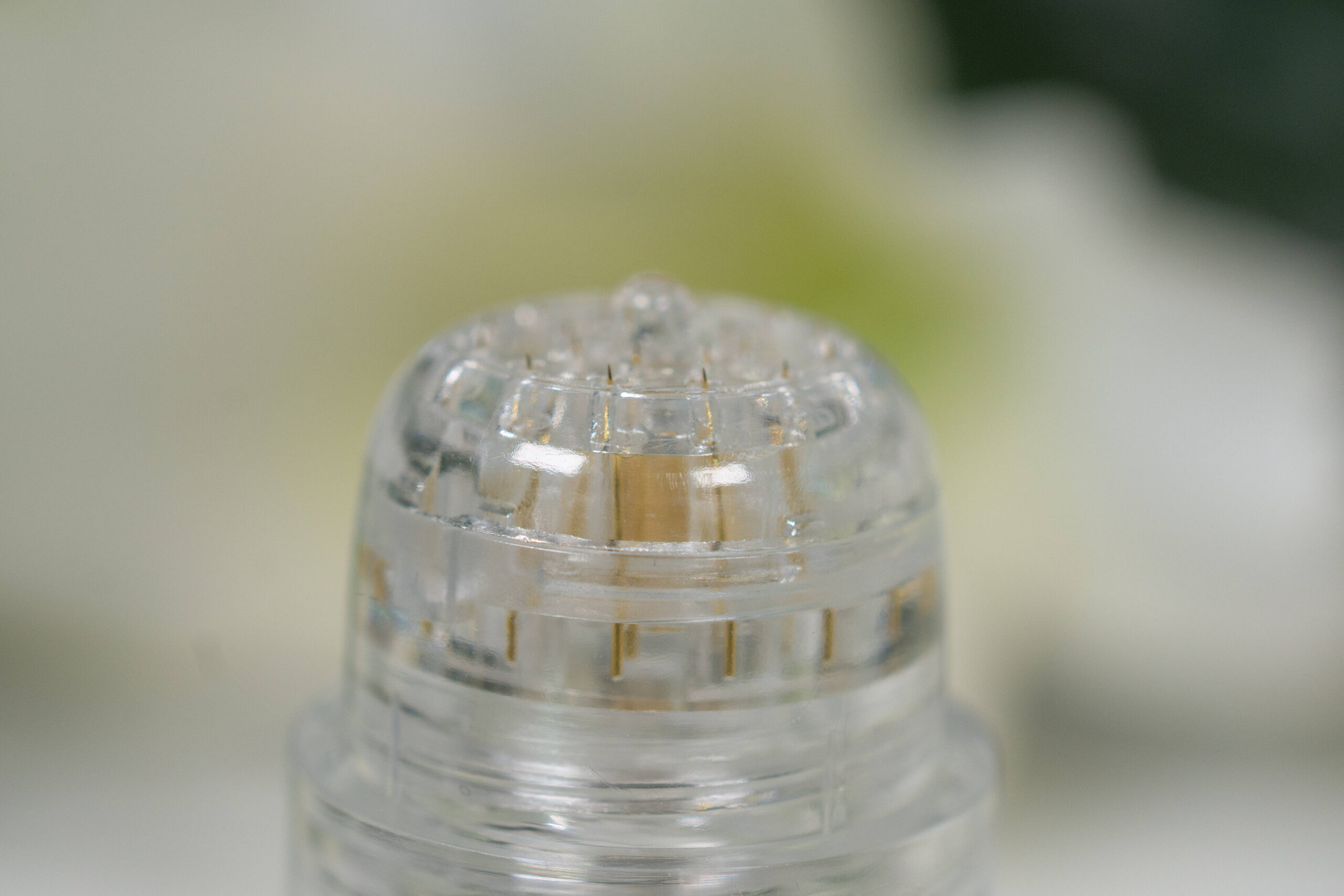
Their total length is 0.5mm according to the brand, which is the average depth you need to reach the Stratum papillare where the micro needling will stimulate collagen production simply by the trauma caused. (More info: Microneedling at home – read this before you try it)
The hollow structure allows the serum to flow from the chamber through the needles onto and into the skin.
To achieve the best effect here, you should reach the Stratum papillare, which is right where the epidermis meets the dermis, so the needles should be long enough to penetrate the whole epidermis, which is depending on the area of your body between 0,03 mm around the eyes up to 4 mm on the soles of your feet. On average it is at around 0,5 mm though.
The small channels created by the needle stay open for around 24 hours, so products applied immediately before, during or shortly after the microneedling process can get deeper into the skin as they don’t need to penetrate the epidermis. That effect is strongest for skincare used directly with microneedling and fades over time.
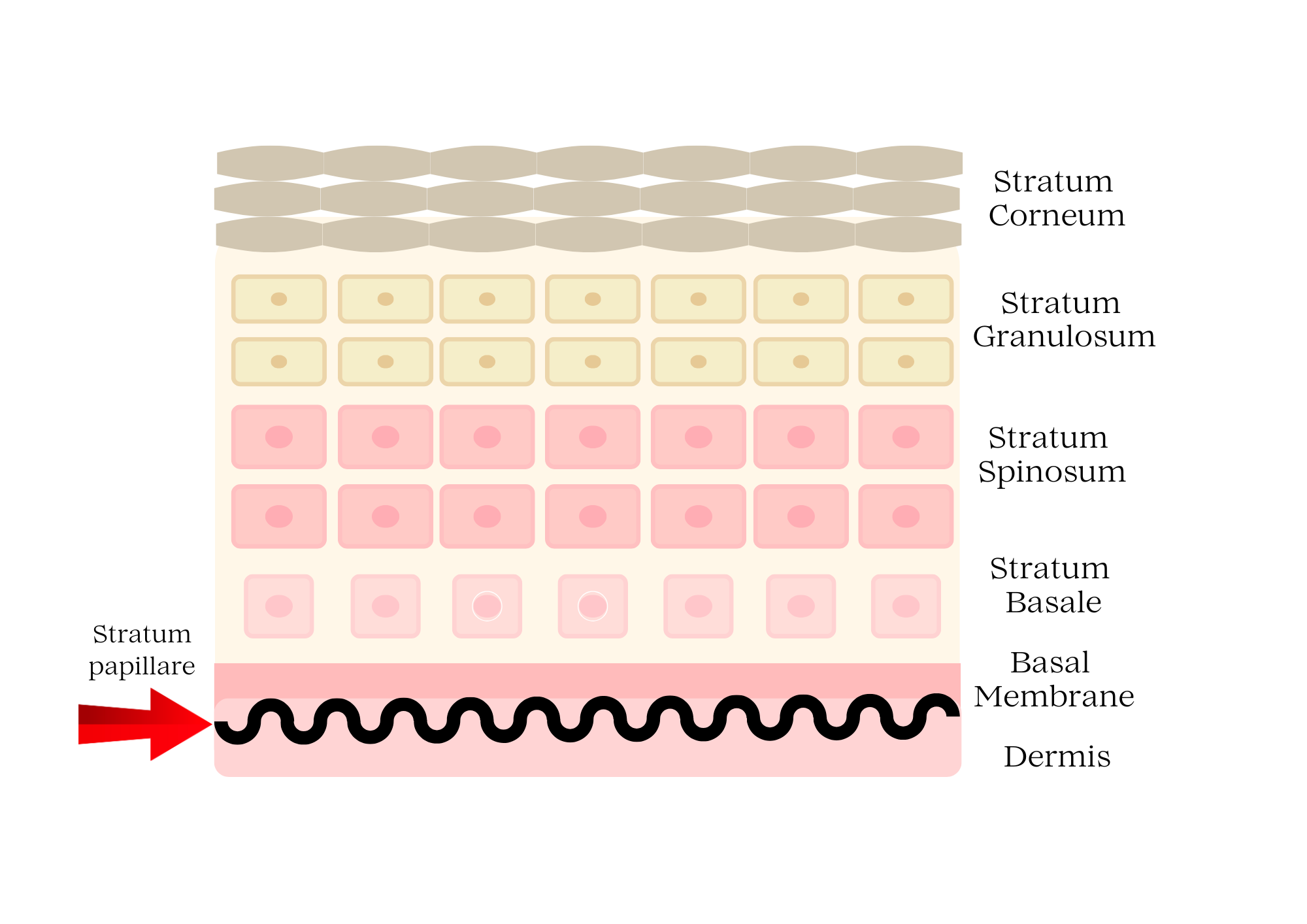
How to use the Qure Micro-Infusion System
To prepare for the treatment you take a fresh head, pick the serum you want to use – you can either use one or mix them half and half – fill that serum into the glass chamber, screw the head on and then put the whole thing upside down on your counter top.
Qure recommends to let it sit like that for 2-3 minutes, but I found 5 minutes to be more effective in getting the serum right to the top of the needles.
During that waiting period you can thoroughly cleanse your face, really make sure that there are no traces of makeup or other things left, and then spritz it with the Hypochlorous Acid spray.
And then it is time to get going: You take the device, remove the cap and press the head against your skin. This pressing motion brings out the needles to their full length, so in theory you can control the depth by how hard you press – if you want to go around the eyes for example, where the epidermis is quite thin, you don’t press as hard so you don’t stamp as deep. How much control you actually have though I don’t know.
Qure will tell you to start in the centre of your face and work your way out, overlapping each stamped area. That means you press down, move about half way of the broad of the head outwards and stamp again so that one part of the area gets stamped twice. And like that you make your way over the entire face once and then start again, making a total of two – if you want even three – pass over the face.
Ideally the serum should start to flow out onto your skin with the first stamping motion. If it doesn’t you might have to wait a little longer or slightly pat on the sides of the glass vial so that any air bubbles could get out of the needles. Sometimes it worked immediately for me, sometimes I had to wait a little, but once the serum started flowing, it kept going for the whole of the treatment.
No matter if you do two or three passes, you will most likely end up with serum left in the vial (it is a very generous amount), so just screw it open and distribute the rest either on your face as extra layer or on your decollete and back of your hands.
You then cleanse the vial, let it dry, discard the head and put on a new one right before you start the next treatment to ensure it stays clean until then.
Treatments should be repeated every other week according to Qure, but you can of course stretch them out longer if that fits your routine better. I wouldn’t go more frequent though to give our skin time to heal.

Ingredients of the Rejuvenation and the Fine Lines and Wrinkles Ampoule
Fine Lines and Wrinkles
 sii|h 0 0, Panthenol
sii|h 0 0, Panthenol  so|h 0 0, Niacinamide
so|h 0 0, Niacinamide  cci|sb|aacne|h, Myrothamnus Flabellifolia Leaf/Stem Extract h, Water solv, Butylene Glycol h|solv 0 1, Hydroxyacetophenone aox, Copper Tripeptide-1
cci|sb|aacne|h, Myrothamnus Flabellifolia Leaf/Stem Extract h, Water solv, Butylene Glycol h|solv 0 1, Hydroxyacetophenone aox, Copper Tripeptide-1  cci|so|aox, Beta-Glucan
cci|so|aox, Beta-Glucan  so|h, Chrysanthellum Indicum Extract, Ethylhexylglycerin pres, Sodium Hyaluronate
so|h, Chrysanthellum Indicum Extract, Ethylhexylglycerin pres, Sodium Hyaluronate  sii|h 0 0, Allantoin
sii|h 0 0, Allantoin  so 0 0, Xanthan Gum vc
so 0 0, Xanthan Gum vcHover the mouse over an ingredient for short explanation. Read more on INCIDecoder.
Rejuvenating (for Dark Spots)
 sii|h 0 0, Tranexamic Acid
sii|h 0 0, Tranexamic Acid  sb|so, Niacinamide
sb|so, Niacinamide  cci|sb|aacne|h, Panthenol
cci|sb|aacne|h, Panthenol  so|h 0 0, Chrysanthellum Indicum Extract, Ethylhexylglycerin pres, Tripeptide-1
so|h 0 0, Chrysanthellum Indicum Extract, Ethylhexylglycerin pres, Tripeptide-1  cci, Xanthan Gum vc, Allantoin
cci, Xanthan Gum vc, Allantoin  so 0 0, SH-Oligopeptide-1 cci
so 0 0, SH-Oligopeptide-1 cciHover the mouse over an ingredient for short explanation. Read more on INCIDecoder.
Here is what they have in common:
Both smell beautiful like roses, probably due to the Rosa Damascene Flower Water used as solvent and share some basic ingredients: Glycerin as humectant, Panthenol for soothing, Niacinamide for its skin beneficial effects, a few other humectants, solvents and Ethylhexylglycerin as preservative. (More info: The benefits of Panthenol in your skincare explained and The benefits of Niacinamide in your skincare explained)
Rejuvenation contains Tranexamic Acid to target hyperpigmentation, Tripeptide-1 and sh-Oligopeptide-1 or Epidermal Growth Factor. (More info: The benefits of Tranexamic Acid in your skincare explained and The benefits of Growth factors in your skincare explained)
Fine Lines and Wrinkles contains Copper-Tripeptide-1, Beta-Glucan and Sodium Hyaluronate. (More info: The benefits of Peptides in your skincare explained, The benefits of Beta Glucan in your skincare explained and The benefits of Hyaluronic Acid in your skincare explained)
More info: How to read the ingredient list in your skincare products
My experience with using the Qure Micro-Infusion System for three months
Now how did the Qure Micro-Infusion System work for me personally? I found it easy to use with a comprehensive instruction. I have never had micro needling done on my face before, so I can’t compare the pain level to an in office treatment, but I disagree with the claim of it being completely painless. I do have a good pain tolerance, but found it uncomfortable to do, especially on top of bones like the orbital bone, around the mouth and on the forehead. Uncomfortable to a point that I never did more than two passes, by the time I was done with that I felt so tense that I needed to stop.
Here is how my face looked directly after treatment – quite red and sometimes with a few spots of pin point bleeding. It also felt tight and sensitive for the next few hours.
Whenever possible I would do it on a Saturday afternoon, giving me a few hours before bed that night to let everything calm down. Directly before bed I would apply a thin layer of La Roche Posay Cicaplast Baume B5, nothing else, and wake up to the redness subsided and my face feeling quite good.
Again no skincare other than the Cicaplast Baume for the next day – unless I had to leave the house, then it would of course apply sunscreen and then back to my normal routine on Monday morning, including makeup. The channels opened by micro needling usually stay pen up to 24 hours, so waiting that period of time felt safe. I also avoided using my Tretinoin or any acids 48 hours before and after doing the treatment, just to be sure I didn’t cause irritation.
Now did I see drastic results? No, nothing that I would attribute solely to the Qure system. But it is incredibly hard to judge subtle changes in your own skin, as how it looks is influenced by so many factors on a daily. I will say that I was complimented by strangers on my skin twice last months though, something that doesn’t happen to me regularly, so maybe Qure is to thank for that?
What I love and don’t love about the Qure Micro-Infusion System
I love the individually packaged heads and the clear and precise instructions on how to use the Qure Micro-Infusion System. It addresses my main concern, the risk of infection when doing at home micro needling. I also love that they provide you with a serum specifically designed to be used for treatment as I think much harm can come from people micro needling things into their skin that simply shouldn’t have gone that deep.
Still, I have one complaint about the treatment ampoules: Why the Rosa Damascene Flower Water instead of regular water? Even if it isn’t much, the rose water will contain fragrant components that serve no other purpose than smelling nice, and while I am not opposed to fragrance in my skincare, I feel a little more hesitant when I purposefully break my skins surface to allow it to go deeper to where my immune cells live… I wish they did a version without that. (More info: Is fragrance in your skincare dangerous?)
I also don’t understand why they have the glass vial you pour the serum in. Yes, that allows you to mix two different serums at a time, but if you could just screw the head on top of the serum vial it would be less waste and less risk for contamination.
Would I repurchase and which skin types do I recommend the Qure Micro-Infusion System to?
I haven’t made up my mind yet if I will continue using the Qure Micro-Infusion System. In parts because of my concerns regarding the rose water, but also in parts because I really, really do not like poking my face with needles. But if you’re already a fan of at-home microneedling, this is a much safer and more hygienic option than traditional derma rollers*.* Both due to the fresh head you use every time, but also because of the reduced risk of trauma to the skin compared to a roller with needles going blunt.

Shop the Qure skincare here
Don’t forget to check out the Discount Code Page on top if you want to save some money on your next skincare purchase, or click here to let me build a personalized skincare routine for you.
If you want to get more involved and pick my next topics or see exclusive behind the scenes content, don’t forget you can head over here and become a YouTube Channel Member!
